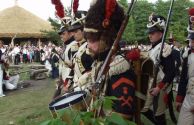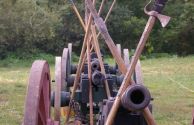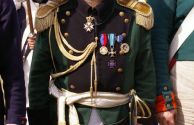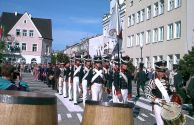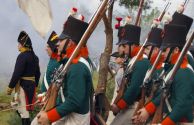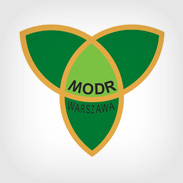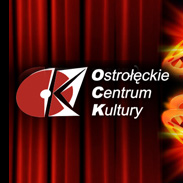Tracing the Ostrołęka Battle of 1831 (7,5 km, 3-4 hours)
It is the year 1831. Poland does not exist on the maps of Europe. Some of our land with Warsaw and Ostrołęka is under Russian rule in the so called Kingdom of Poland.
Grochowska, Iganie. On May 26 1831 in Ostrołęka and its nearest vicinity one of the bloodiest battles of the Uprising begins. When the victory turned in the favor of the Russian army, the Polish are saved from total defeat by the heroic charge of the 4th Light Cavalry Regiment led by Lt Col Józef Bem. The Russians cease new attacks. In the evening, the Polish take the decision to retreat towrds Warsaw. The Russians do not commence their chase.
The toll on both sides is tremendous. The losses on the Russian side amount to ca. 5,800 dead and injured. The losses on the Polish side amount to 1,800 dead soldiers and officers, 2,900 injured, 1,400 taken prisoners. Two generals fell in fight – Gen Ludwik Kicki and Gen Henryk Kamieński. Although there was no winner of the battle itself, as a result of huge losses and lost opportunities, the fall of commanders’ morale, the battle was the Uprising’s turning point. After its collapse, the invader set about intensive repressions not only towards the Uprising’s participants, but also towards the whole Polish nation. Only Poland’s regaining of independence in 1918 made it possible for the society of Ostrołęka to pay due tribute to the Ostrołęka battle of 1831, also through erecting monuments and celebrating consecutive anniversaries. It was the time when the crosses were placed on the 4th Regiment’s grave at the wall of the Ostrołęka monastery, on Gen Kicki and Gen Kamieński’s graves, the monument to the heroic charge led by Joseph Bem was unveiled, and construction works of the monumental Mausoleum of the Ostrołęka Battle were started.
When looking for traces of the 1831 Ostrołęka Battle you must visit:
St. Anthony’s post-Bernardine Church (the monastery) and the 4th Regiment’s Monument
The Bernardines’post-monastery complex, often referred to as the pearl of the northern Mazovia, modest on the outside, strikes with the richness of the interior and superb polychromies. The history of this building interweaves with the history of Ostrołęka. It was within the walls of this monastery where, during the November Uprising, the famous 4th Regiment were defending themselves – the 4th Regiment of Line Infantry under the command of Gen Ludwik Bogusławski. Outside the walls, at ul. Staszica there is the grave to the 4th Regiment’s soldiers who died a soldier’s death in 1831. In 1973, on the grave a monument with the following inscription was unveiled “To those who desired for battle fame, there are only to paths, to win or die”.
Józef Bem’s Monument, the Kurpie Culture Museum
In the middle of the former market place, called Bem’s Square, there is the monument of Gen Józef Bem, unveiled on May 26, 1973, on which we can read the following inscription “As a tribute to a great Pole – the society of Ostrołęka”. At the back of the monument, in the building of the former post office, housed is the Kurpie Culture Museum. You can see many interesting exhibitions concerning the November Uprising as well as the whole city and the Kurpie region. It is worth paying attention to the artistic panorama of the Ostrołęka Battle, made by Krzysztof Jezierski, the artist.
Gen Henryk Kamieński’s Grave
Leaving Bem’s Square and going across Antoni Madaliński’s bridge towards the other bank of the Narew river, you reach the area of the bloodiest struggle between the Polish and Russian armies in 1831. Having passed Siemowit III’s roundabout you walk along ul. Stacha Konwy. At the building number 8, next to a small wooden house, there is an inconspicuous fenced cross. This, according to tradition, is the grave of Gen Henryk Kamieński, the heroically fallen in battle commander of the 5th Infantry Division.
The Horse Artillery Charge Monument (led by Józef Bem)
When you cross ul. Stacha Konwy, walking along a field way, passing a petrol station on your right and the moats on the left, you reach ul. Fortowa. Going right, you soon find yourself at an artificially made hill - the monument, which was unveiled with great homage on May 26, 1931, on the day of 100th Battle Anniversary. It depits a rising eagle. The monument was damaged by the German invader during WWII. The unveiling ceremony of the rebuilt monument took place on July 20, 1958. The inscription on the monument reads, “To the heroes of the artillery charge under the command of Joseph Bem in the Battle of Ostrołęka 26.05.1831 the society of Ostrołęka”.
Gen Ludwik Kicki’s Grave
Having passed the monument at the back, you continue along the field way toward the village of Kruki. On reaching the main village road, you turn right. Behind the last buildings, in a copse located on the right hand side of the road, on a hill, there is the concrete fence enclosed grave of Gen Kicki. At the moment of death, this soldier covered in glory in the Battle of Raszyn and in Napoleon’s Campaign to Russia next to Rev Poniatowski, the commander of the 2nd Regiment of Uhlans, was 40 years old.
The Monument and Mausoleum of Soldiers Killed in the Ostrołęka Battle on May 26, 1831
http://muzeum.ostroleka.pl
Grochowska, Iganie. On May 26 1831 in Ostrołęka and its nearest vicinity one of the bloodiest battles of the Uprising begins. When the victory turned in the favor of the Russian army, the Polish are saved from total defeat by the heroic charge of the 4th Light Cavalry Regiment led by Lt Col Józef Bem. The Russians cease new attacks. In the evening, the Polish take the decision to retreat towrds Warsaw. The Russians do not commence their chase.
The toll on both sides is tremendous. The losses on the Russian side amount to ca. 5,800 dead and injured. The losses on the Polish side amount to 1,800 dead soldiers and officers, 2,900 injured, 1,400 taken prisoners. Two generals fell in fight – Gen Ludwik Kicki and Gen Henryk Kamieński. Although there was no winner of the battle itself, as a result of huge losses and lost opportunities, the fall of commanders’ morale, the battle was the Uprising’s turning point. After its collapse, the invader set about intensive repressions not only towards the Uprising’s participants, but also towards the whole Polish nation. Only Poland’s regaining of independence in 1918 made it possible for the society of Ostrołęka to pay due tribute to the Ostrołęka battle of 1831, also through erecting monuments and celebrating consecutive anniversaries. It was the time when the crosses were placed on the 4th Regiment’s grave at the wall of the Ostrołęka monastery, on Gen Kicki and Gen Kamieński’s graves, the monument to the heroic charge led by Joseph Bem was unveiled, and construction works of the monumental Mausoleum of the Ostrołęka Battle were started.
When looking for traces of the 1831 Ostrołęka Battle you must visit:
St. Anthony’s post-Bernardine Church (the monastery) and the 4th Regiment’s Monument
The Bernardines’post-monastery complex, often referred to as the pearl of the northern Mazovia, modest on the outside, strikes with the richness of the interior and superb polychromies. The history of this building interweaves with the history of Ostrołęka. It was within the walls of this monastery where, during the November Uprising, the famous 4th Regiment were defending themselves – the 4th Regiment of Line Infantry under the command of Gen Ludwik Bogusławski. Outside the walls, at ul. Staszica there is the grave to the 4th Regiment’s soldiers who died a soldier’s death in 1831. In 1973, on the grave a monument with the following inscription was unveiled “To those who desired for battle fame, there are only to paths, to win or die”.
Józef Bem’s Monument, the Kurpie Culture Museum
In the middle of the former market place, called Bem’s Square, there is the monument of Gen Józef Bem, unveiled on May 26, 1973, on which we can read the following inscription “As a tribute to a great Pole – the society of Ostrołęka”. At the back of the monument, in the building of the former post office, housed is the Kurpie Culture Museum. You can see many interesting exhibitions concerning the November Uprising as well as the whole city and the Kurpie region. It is worth paying attention to the artistic panorama of the Ostrołęka Battle, made by Krzysztof Jezierski, the artist.
Gen Henryk Kamieński’s Grave
Leaving Bem’s Square and going across Antoni Madaliński’s bridge towards the other bank of the Narew river, you reach the area of the bloodiest struggle between the Polish and Russian armies in 1831. Having passed Siemowit III’s roundabout you walk along ul. Stacha Konwy. At the building number 8, next to a small wooden house, there is an inconspicuous fenced cross. This, according to tradition, is the grave of Gen Henryk Kamieński, the heroically fallen in battle commander of the 5th Infantry Division.
The Horse Artillery Charge Monument (led by Józef Bem)
When you cross ul. Stacha Konwy, walking along a field way, passing a petrol station on your right and the moats on the left, you reach ul. Fortowa. Going right, you soon find yourself at an artificially made hill - the monument, which was unveiled with great homage on May 26, 1931, on the day of 100th Battle Anniversary. It depits a rising eagle. The monument was damaged by the German invader during WWII. The unveiling ceremony of the rebuilt monument took place on July 20, 1958. The inscription on the monument reads, “To the heroes of the artillery charge under the command of Joseph Bem in the Battle of Ostrołęka 26.05.1831 the society of Ostrołęka”.
Gen Ludwik Kicki’s Grave
Having passed the monument at the back, you continue along the field way toward the village of Kruki. On reaching the main village road, you turn right. Behind the last buildings, in a copse located on the right hand side of the road, on a hill, there is the concrete fence enclosed grave of Gen Kicki. At the moment of death, this soldier covered in glory in the Battle of Raszyn and in Napoleon’s Campaign to Russia next to Rev Poniatowski, the commander of the 2nd Regiment of Uhlans, was 40 years old.
The Monument and Mausoleum of Soldiers Killed in the Ostrołęka Battle on May 26, 1831
http://muzeum.ostroleka.pl
